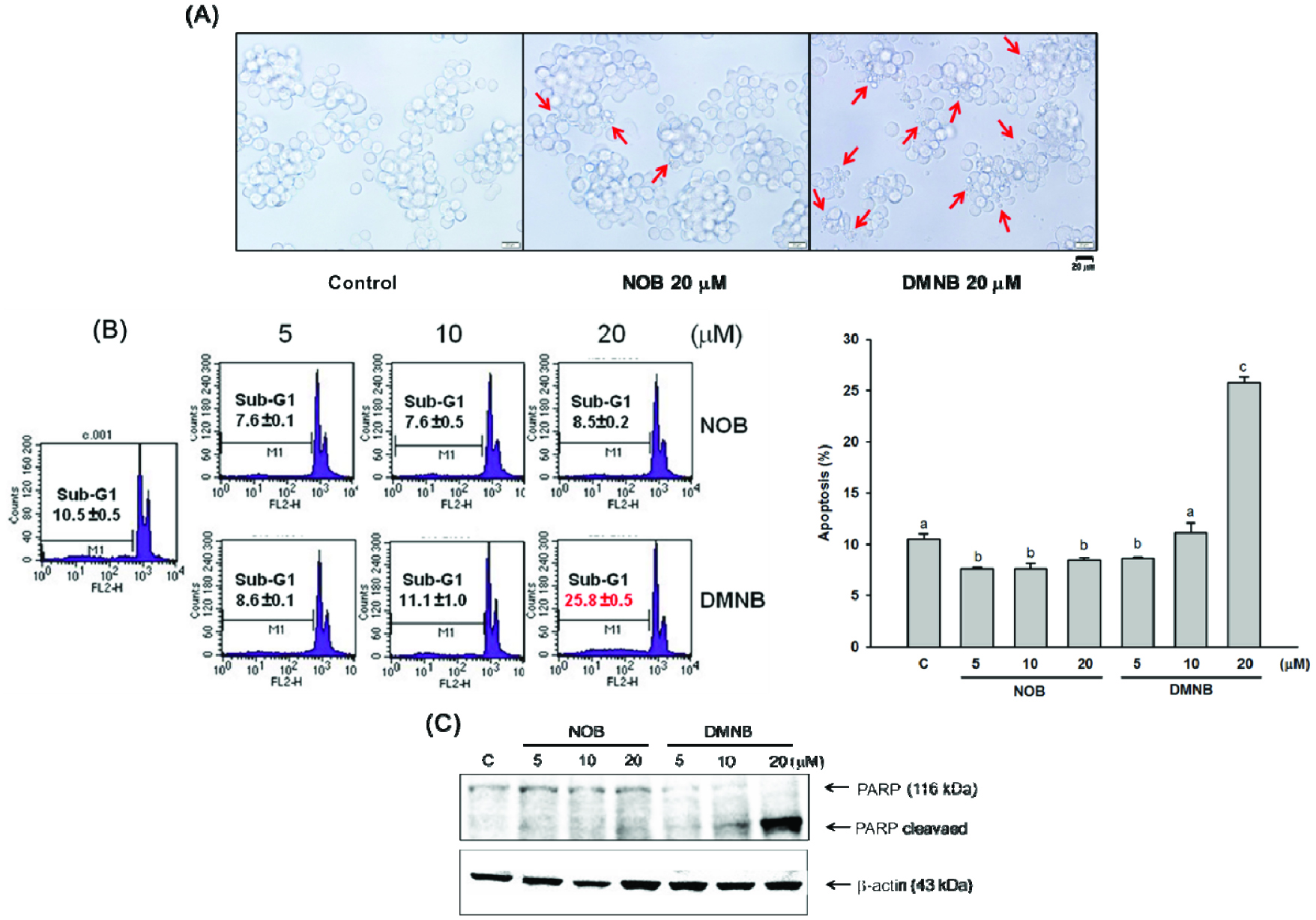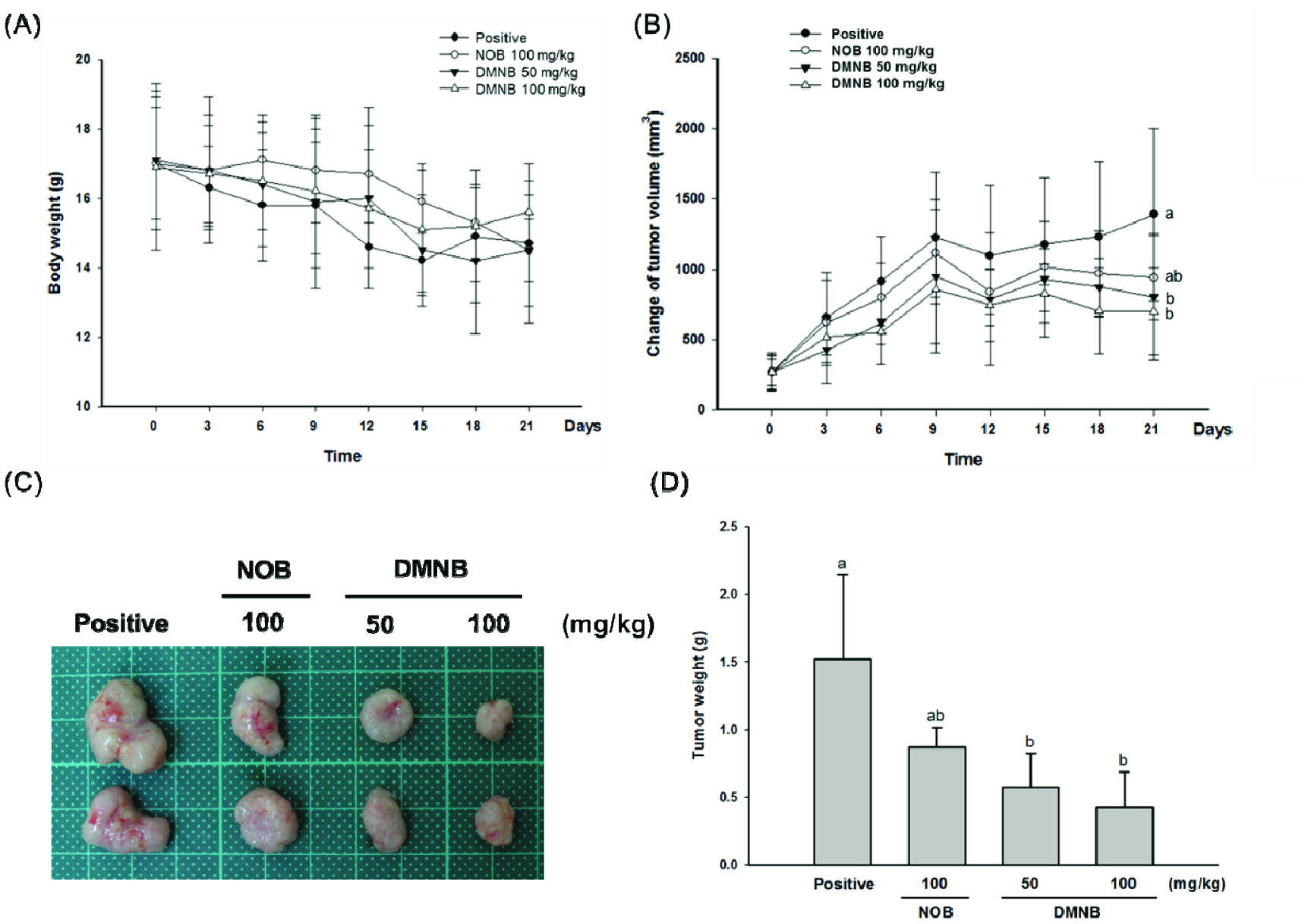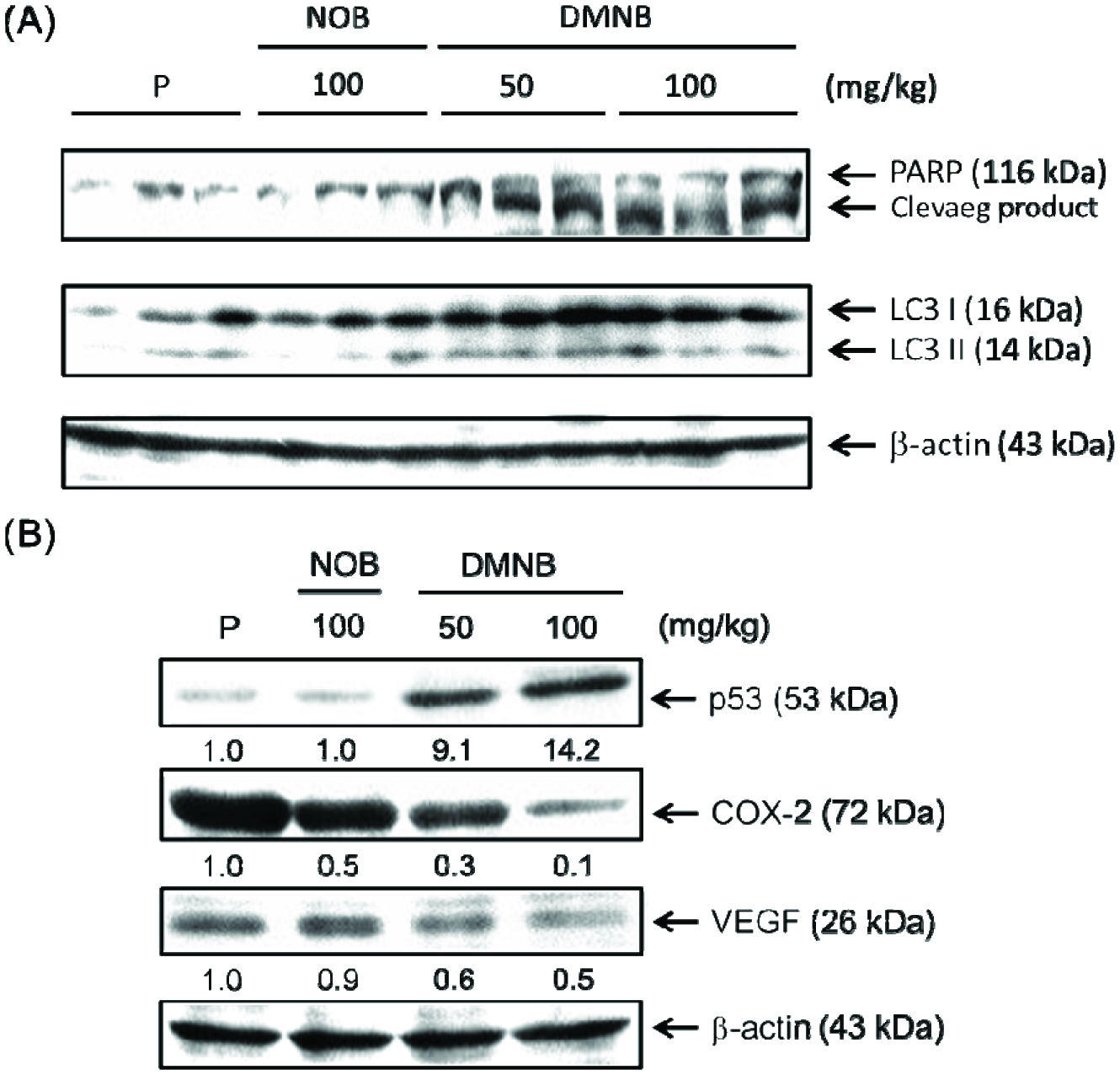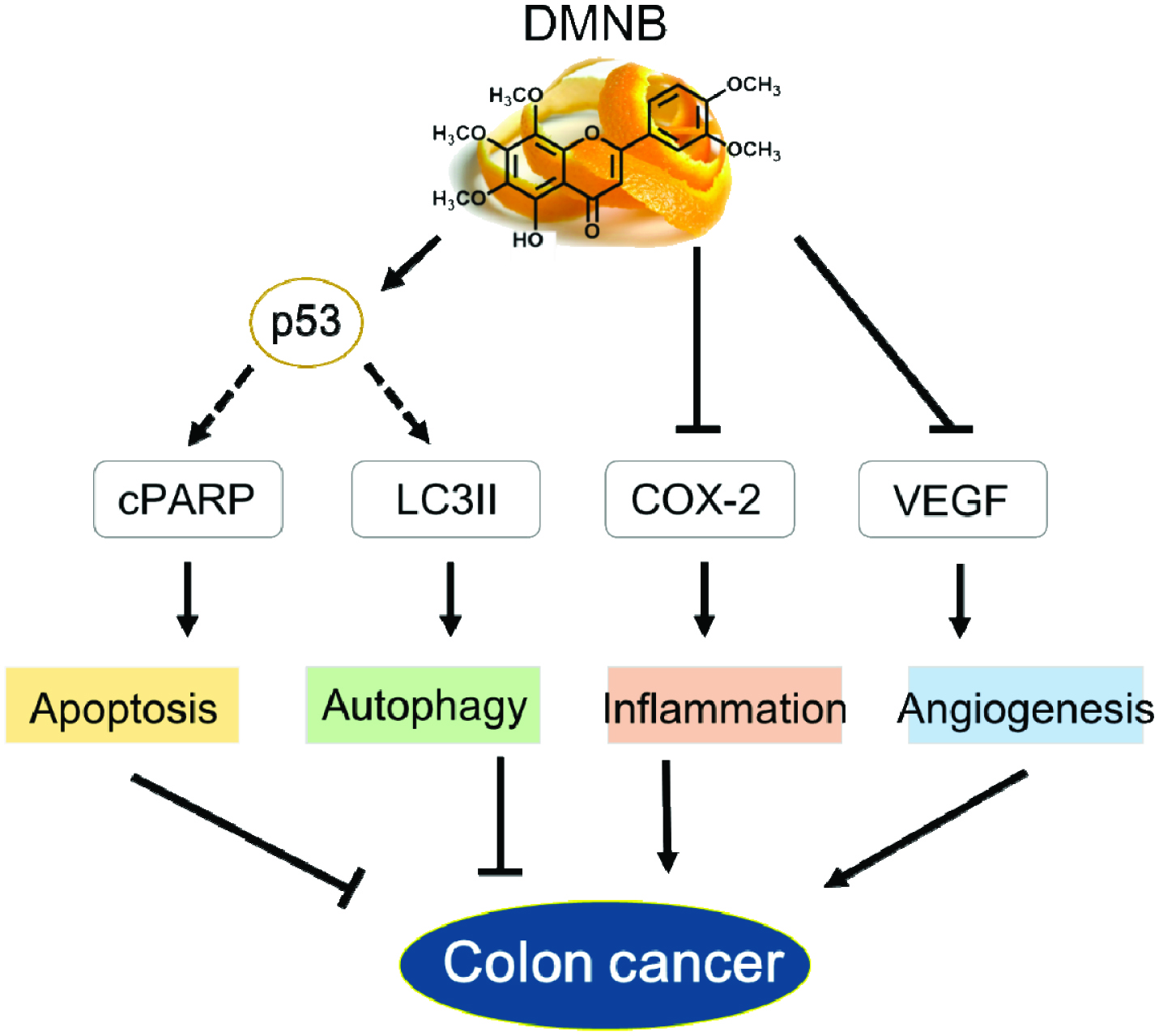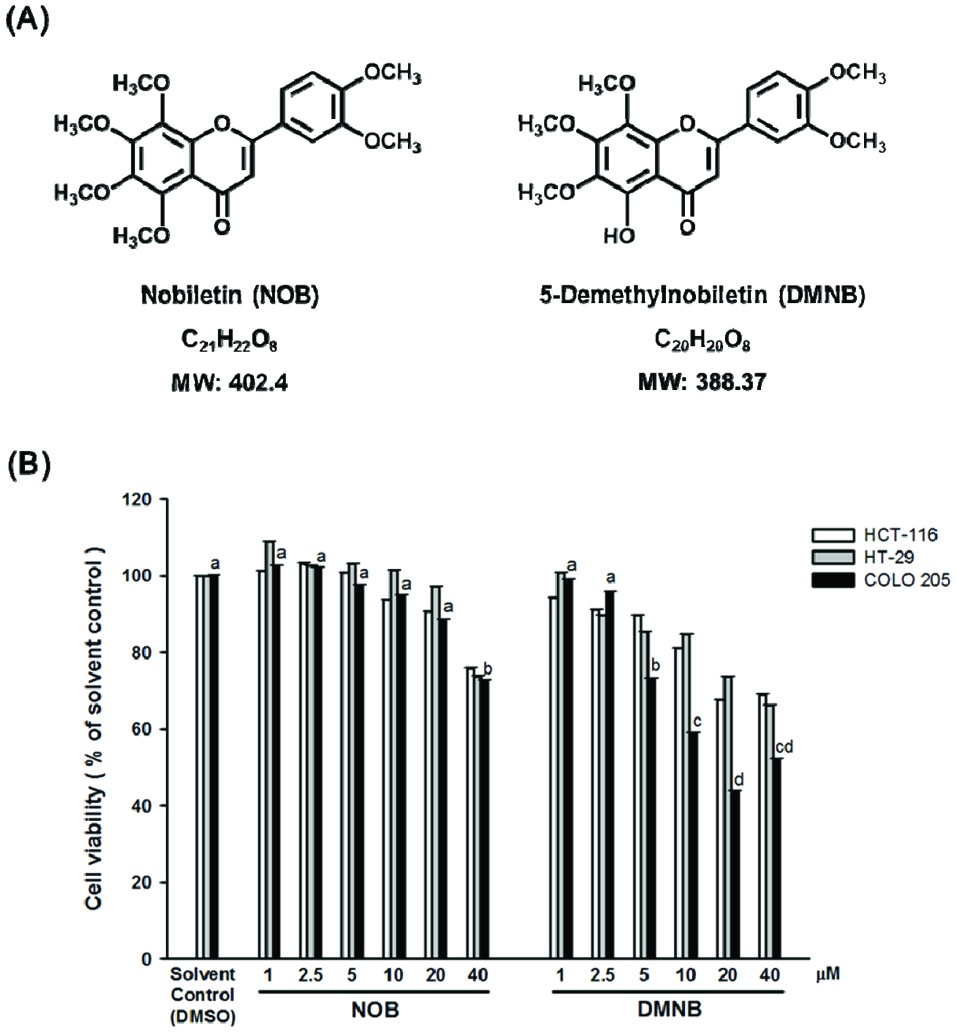
Figure 1.
Effect of NOB and DMNB on the growth of HCT-116, HT-29 and COLO 205 cells.
(A) Chemical structures of NOB and DMNB. (B) Cell well treated with 0, 1, 2.5, 5, 10, 20 and 40 μM of NOB or DMNB for 24 h. Cell viability was determined by MTT assay. Data are expressed as mean ± SD. When there were significant differences among control, NOB and DMNB groups, they were further analyzed by one-way ANOVA and Duncan’s Multiple Range Test, with results being indicated by the letters a, b, c, and d.